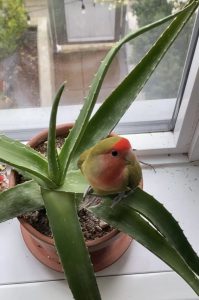Guaman Poma’s letter to the king is very detailed in explaining the history and the life of the Inca people, defining roles and the differences among the race and status of the people. The author of Guaman Poma de Ayala provides a lot of anecdotes to help the reader have a better understanding of Guaman Poma’s thoughts with their own perspective and understanding. I personally found it helpful though it made the text seem extra heavy and harder to take in at times.
In “Ordinances of the Inca” Poma lists decrees that he states in first person using either “I” or “We” meant to help better the lives of the people while still conserving some Inca culture yet obeying catholic views. In some of the decrees we can clearly see that the women have much restriction in their lives, yet a reoccurring theme that later continues to be mentioned is the issue of rape and the penalty. This is clearly an issue to which he brings up the consequences and how it is tied with the arrival of the Spaniards.
His opinions towards the Spaniards are very strong, in one text stating “See here, you poor, foolish, and incompetent Spaniards, who are as proud as Lucifer…” indicating how their behaviour is to that of a fallen angel, in which their behaviours is not close with god or Christian religion anymore. Most of his arguments are of how greed from the Spaniards essentially poisoned the Incas and brought the downfall of the kingdom. He even argues, “All the bad things—adultery and other mortal sins—were brought in by those Christians, who, under the cover of teaching catechism, deflowered“all the maidens; because of this, many mestizos are born in this kingdom.” Guaman Poma describes all this to the king in a manner to help the king visualize how and why the Incas are the way are “presently”, and need for more order to be in place for the people. He describes the creation of mestizo children and relationship of different raced couples causing a division to occur within the communities and a decrease in pure Inca bloodlines. He even mentions how some mestizo become to be a part of tearing the community because of their actions, possibly because of how they were kept ostracized from the rest of the Inca community. This makes me wonder if Guaman Poma didn’t see himself as a mestizo since he never clearly stated if he was. Perhaps because of his higher status he believes there is no need for the king to define who he is only that of his power and that he follows the catholic religion.
Guaman Poma integrates much of catholic religion into the text, ending or starting some parts of his text with a prayer, relating biblical events to events in Incan culture, and having a strong emphasis on how there are many things the Incas do that make them naturally Christian despite the few times that almost veered from the path. In some parts it feels as though he is trying to make the reader aware of even convince them that certain events that had happened in the Inca history timeline were in line with what was stated in the bible, and their worships were inline with praising god but in a different perspective. His direct messages to “Christians” were rather critical, in which most felt like they should be warned and realize the terrible events that have occurred in Peru because of them. This makes me wonder if the is trying to create a define line between the king and a Christian individual, for if the king were reading this and saw himself as the Christian reader he may be offended.
He goes into so much depth about the life of the Incas and their expected role throughout their life, along with the history that he knows of makes me wonder why he felt this was appropriate for a “letter”. In all respect I feel like it is more of a book, where it is even titled as Chronicles. However as a reader I can tell he is determined for this to make to to the king, so he proves plenty explanations for why Peru needs help and a change with the rulings. Aside from this however, I feel that this is something to long that the king would find “boring” (if the king didn’t care that much for feedback coming back from one of his colonies), to long to finish reading or even listen to in that manner (if he had someone read the letter out to him).
One interesting that I noticed when reading the decrees was that he had two decrees about how people should not bury their dead within their homes. In one decree he states that they should be buried in vaults and with the deceased belongings, while the other mentions how the person who buried them should be banished. Were people burying their dead in there homes as a tradition, was it because people were poor and could not afford a vault, was this action seen as sin in Inca culture, or was this stated so that people have “proper” burials that were similar to that of Christians?
